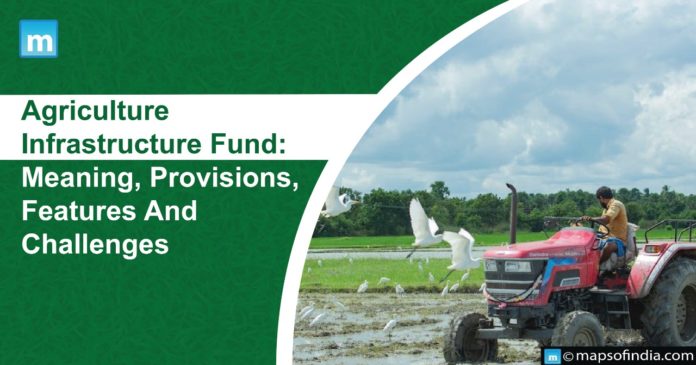The Agriculture Infrastructure fund (AIF), which was launched for the financial year 2020-2029, has crossed the limit of the 8000 crore mark. The central government moved the fund and was released in July 2020.
What is the Agriculture Infrastructure Fund (AIF)?
The agriculture union government released an agriculture infrastructure fund intending to provide medium- and long-term debt financing facilities. It also launched some projects for post-harvest management infrastructure.
Along with the fund, the government also released guidelines. According to the guidelines, this fund will be provided as packaging units and e-market points linked with e-trading platforms. People who will avail of this fund by the central government will be called “Agripreneurs” (agriculture entrepreneurs).
Provisions under the Agriculture Infrastructure Fund:
- Interest rate
This support by the central government comes with a 3% interest subvention from the government annually. Not only this, but the government also guaranteed credit with a limit of fees of up to two crore rupees.
- Tenure for the loan
This loan will be disbursed in the next four years, which starts with the sanction of Rs 10,000 crore in the same year. Similarly, the remaining money will be available in the next three financial years. In total, this process will take four years.
- Period of the loan
As per the government, the loan’s interest rate will be low for the farmers. The maximum time for the subvention should not be more than the period of seven years.
Features of the Agriculture Infrastructure Fund
Three major features of this agriculture infrastructure fund issued by the union government. The features are as follows:
- Memorandum of understanding
Banks or any other institution who want to avail the interest subvention for their borrowers must sign a memorandum of understanding (MoU) with the “National bank for agriculture and rural development”. This memorandum of understanding will also be signed by the department of agriculture (DAC).
- Eligibility and availability
The next feature of this fund is that the project will be eligible for a grant under the existing union or state government scheme.
- Provision of targets
This feature of the scheme provides indicative targets for the states as well as union territories.
Challenges with the fund
Along with the features, there are some issues and challenges which are being faced by the fund.
- Inadequate number of farmers’ producer organisations (FPO)
In India, there are only a limited number of farmer-producer organisations. To manage them, the number has to be doubled. Currently, in India, there are only 5000 organisations.
There is a mismatch in the numbers of the organisations. Farmers’ organisations exist only on paper.
2. Lack of capital for FPO
Forest producer organisations require technical handholding support and adequate capital and infrastructure facilities to sustain the business.
3. Missing agri-futures market
To reduce the risks in the market, an idea of a standard future market is necessary. While in other countries like China or the United States, the number of markets is doubled compared to India. According to the report of PIB, “States which are leading the front with applications are Andhra Pradesh, Madhya Pradesh, Uttar Pradesh, Karnataka and Rajasthan.




